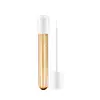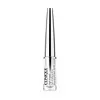What's inside
What's inside
 Key Ingredients
Key Ingredients

 Benefits
Benefits

 Concerns
Concerns

 Ingredients Side-by-side
Ingredients Side-by-side

Water
Skin ConditioningAlcohol Denat.
AntimicrobialGlycerin
HumectantHydroxyethylcellulose
Emulsion StabilisingPentylene Glycol
Skin ConditioningSodium Hyaluronate
HumectantMadecassoside
AntioxidantRosa Centifolia Extract
Skin ConditioningRosa Meichibon/Delgramaue Callus
EmollientSafflower Glucoside
Threonine
Sodium Citrate
BufferingArginine
MaskingSerine
Masking2-Oleamido-1,3-Octadecanediol
Skin ConditioningProline
Skin ConditioningAlanine
MaskingAminopropyl Triethoxysilane
Ascorbyl Glucoside
AntioxidantPropanediol
SolventPropylene Glycol
HumectantHydroxypropyl Tetrahydropyrantriol
Skin ConditioningCitric Acid
BufferingXanthan Gum
EmulsifyingPanthenol
Skin ConditioningBiotin
AntiseborrhoeicGlutamic Acid
HumectantPolysorbate 21
EmulsifyingTocopherol
AntioxidantTocopheryl Acetate
AntioxidantPhenoxyethanol
PreservativeWater, Alcohol Denat., Glycerin, Hydroxyethylcellulose, Pentylene Glycol, Sodium Hyaluronate, Madecassoside, Rosa Centifolia Extract, Rosa Meichibon/Delgramaue Callus, Safflower Glucoside, Threonine, Sodium Citrate, Arginine, Serine, 2-Oleamido-1,3-Octadecanediol, Proline, Alanine, Aminopropyl Triethoxysilane, Ascorbyl Glucoside, Propanediol, Propylene Glycol, Hydroxypropyl Tetrahydropyrantriol, Citric Acid, Xanthan Gum, Panthenol, Biotin, Glutamic Acid, Polysorbate 21, Tocopherol, Tocopheryl Acetate, Phenoxyethanol
Water
Skin ConditioningDimethicone
EmollientButylene Glycol
HumectantMethyl Trimethicone
Skin ConditioningVinyl Dimethicone/Methicone Silsesquioxane Crosspolymer
Polysorbate 20
EmulsifyingGlycerin
HumectantBis-PEG-18 Methyl Ether Dimethyl Silane
EmollientSilica
AbrasivePolymethylsilsesquioxane
Lauryl PEG-9 Polydimethylsiloxyethyl Dimethicone
Skin ConditioningPEG-60 Almond Glycerides
EmulsifyingMethyl Gluceth-20
HumectantPolysilicone-11
Curcuma Longa Root Extract
MaskingPanax Ginseng Root Extract
EmollientPolygonum Cuspidatum Root Extract
AntioxidantCreatine
Skin ConditioningCamellia Sinensis Leaf Extract
AntimicrobialAcetyl Carnitine Hcl
Skin ConditioningGalactoarabinan
Trifolium Pratense Extract
Skin ConditioningPhyllanthus Emblica Fruit Extract
HumectantCaffeine
Skin ConditioningCholesterol
EmollientGlycine Soja Seed Extract
Skin ConditioningYeast Extract
Skin ConditioningDisodium Nadh
EmollientSodium Hyaluronate
HumectantPalmitoyl Tripeptide-1
Skin ConditioningAdenosine Phosphate
Skin ConditioningArginine
MaskingPalmitoyl Tetrapeptide-7
Skin ConditioningAcetyl Tetrapeptide-3
Skin ProtectingDipotassium Glycyrrhizate
HumectantLaurdimonium Hydroxypropyl Hydrolyzed Soy Protein
Sodium Hydroxide
BufferingEthylhexylglycerin
Skin ConditioningCaprylyl Glycol
EmollientTocopheryl Acetate
AntioxidantLecithin
EmollientHexylene Glycol
EmulsifyingCarbomer
Emulsion StabilisingXanthan Gum
EmulsifyingDisodium EDTA
Tocopherol
AntioxidantBHT
AntioxidantPhenoxyethanol
PreservativeSodium Dehydroacetate
PreservativeWater, Dimethicone, Butylene Glycol, Methyl Trimethicone, Vinyl Dimethicone/Methicone Silsesquioxane Crosspolymer, Polysorbate 20, Glycerin, Bis-PEG-18 Methyl Ether Dimethyl Silane, Silica, Polymethylsilsesquioxane, Lauryl PEG-9 Polydimethylsiloxyethyl Dimethicone, PEG-60 Almond Glycerides, Methyl Gluceth-20, Polysilicone-11, Curcuma Longa Root Extract, Panax Ginseng Root Extract, Polygonum Cuspidatum Root Extract, Creatine, Camellia Sinensis Leaf Extract, Acetyl Carnitine Hcl, Galactoarabinan, Trifolium Pratense Extract, Phyllanthus Emblica Fruit Extract, Caffeine, Cholesterol, Glycine Soja Seed Extract, Yeast Extract, Disodium Nadh, Sodium Hyaluronate, Palmitoyl Tripeptide-1, Adenosine Phosphate, Arginine, Palmitoyl Tetrapeptide-7, Acetyl Tetrapeptide-3, Dipotassium Glycyrrhizate, Laurdimonium Hydroxypropyl Hydrolyzed Soy Protein, Sodium Hydroxide, Ethylhexylglycerin, Caprylyl Glycol, Tocopheryl Acetate, Lecithin, Hexylene Glycol, Carbomer, Xanthan Gum, Disodium EDTA, Tocopherol, BHT, Phenoxyethanol, Sodium Dehydroacetate
Ingredients Explained
These ingredients are found in both products.
Ingredients higher up in an ingredient list are typically present in a larger amount.
Arginine is an amino acid that is important for human development. Your body uses is it to produce hair keratin and skin collagen.
As a cosmetic ingredient, Arginine has antioxidant properties and can also help repair damaged skin. This ingredient is derived either synthetically or from animals.
Arginine isn't fungal acne safe when used in the presence of other lipids (fats, fatty acids, oils, esters, etc). Oils and fats occur naturally within the skin, so take caution when using Arginine if you're prone to fungal acne.
Learn more about ArginineGlycerin is already naturally found in your skin. It helps moisturize and protect your skin.
A study from 2016 found glycerin to be more effective as a humectant than AHAs and hyaluronic acid.
As a humectant, it helps the skin stay hydrated by pulling moisture to your skin. The low molecular weight of glycerin allows it to pull moisture into the deeper layers of your skin.
Hydrated skin improves your skin barrier; Your skin barrier helps protect against irritants and bacteria.
Glycerin has also been found to have antimicrobial and antiviral properties. Due to these properties, glycerin is often used in wound and burn treatments.
In cosmetics, glycerin is usually derived from plants such as soybean or palm. However, it can also be sourced from animals, such as tallow or animal fat.
This ingredient is organic, colorless, odorless, and non-toxic.
Glycerin is the name for this ingredient in American English. British English uses Glycerol/Glycerine.
Learn more about GlycerinPhenoxyethanol is a preservative that has germicide, antimicrobial, and aromatic properties. Studies show that phenoxyethanol can prevent microbial growth. By itself, it has a scent that is similar to that of a rose.
It's often used in formulations along with Caprylyl Glycol to preserve the shelf life of products.
Sodium Hyaluronate is hyaluronic acid's salt form. It is commonly derived from the sodium salt of hyaluronic acid.
Like hyaluronic acid, it is great at holding water and acts as a humectant. This makes it a great skin hydrating ingredient.
Sodium Hyaluronate is naturally occurring in our bodies and is mostly found in eye fluid and joints.
These are some other common types of Hyaluronic Acid:
Learn more about Sodium HyaluronateTocopherol (also known as Vitamin E) is a common antioxidant used to help protect the skin from free-radicals and strengthen the skin barrier. It's also fat soluble - this means our skin is great at absorbing it.
Vitamin E also helps keep your natural skin lipids healthy. Your lipid skin barrier naturally consists of lipids, ceramides, and fatty acids. Vitamin E offers extra protection for your skin’s lipid barrier, keeping your skin healthy and nourished.
Another benefit is a bit of UV protection. Vitamin E helps reduce the damage caused by UVB rays. (It should not replace your sunscreen). Combining it with Vitamin C can decrease sunburned cells and hyperpigmentation after UV exposure.
You might have noticed Vitamin E + C often paired together. This is because it is great at stabilizing Vitamin C. Using the two together helps increase the effectiveness of both ingredients.
There are often claims that Vitamin E can reduce/prevent scarring, but these claims haven't been confirmed by scientific research.
Learn more about TocopherolTocopheryl Acetate is AKA Vitamin E. It is an antioxidant and protects your skin from free radicals. Free radicals damage the skin by breaking down collagen.
One study found using Tocopheryl Acetate with Vitamin C decreased the number of sunburned cells.
Tocopheryl Acetate is commonly found in both skincare and dietary supplements.
Learn more about Tocopheryl AcetateWater. It's the most common cosmetic ingredient of all. You'll usually see it at the top of ingredient lists, meaning that it makes up the largest part of the product.
So why is it so popular? Water most often acts as a solvent - this means that it helps dissolve other ingredients into the formulation.
You'll also recognize water as that liquid we all need to stay alive. If you see this, drink a glass of water. Stay hydrated!
Learn more about WaterXanthan gum is used as a stabilizer and thickener within cosmetic products. It helps give products a sticky, thick feeling - preventing them from being too runny.
On the technical side of things, xanthan gum is a polysaccharide - a combination consisting of multiple sugar molecules bonded together.
Xanthan gum is a pretty common and great ingredient. It is a natural, non-toxic, non-irritating ingredient that is also commonly used in food products.
Learn more about Xanthan Gum